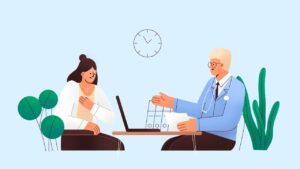In honour of Spinal Health Month, I thought it would be appropriate to chat about our spine and how to keep it in good, moving condition.
Unfortunately, in today’s society, we are fighting an uphill battle when trying to maintain a healthy spine. Most of our days are spent seated for far too long. We wake, sit to eat, drive to work, sit behind a computer, drive home, eat, and go to bed. Our bodies were never designed to bear gravity in such a way.
It took millions of years of evolution for us to become bipedal and walk on two feet. This allowed us to hunt, gather, and colonise efficiently while burning minimal energy. Yet this evolution has been demolished in just a few decades due to modern societal demands. Our bodies and nervous systems crave movement.
So what can we do?
It’s important to remember, “Motion is lotion!” Without it, the phrase “use it or lose it” becomes a literal reality. If we don’t move fluidly, frequently, and correctly, our muscles, joints, and discs deteriorate.
This happens through a process called homeostasis – if the body senses that certain tissues aren’t being used or needed, it will redistribute them. This often leads to early arthritic and degenerative changes. From this, we can see a range of conditions arise, including muscle atrophy, tendinitis, herniated discs, nerve root disorders, chronic headaches, reduced cardiovascular function, and many more.
While a lack of movement is probably the biggest contributor to poor spinal health, we also need to address a fundamental aspect of sitting: basic postural biomechanics. Poor posture not only affects our biomechanics but can also impact our overall health. Research has shown that sitting for just one hour after the age of 25 takes 22 minutes off our lifespan.
This might not seem like much, but over 30 years of full-time work, it adds up to nearly four years! That’s significant. There’s also supporting research that if we sit for longer than one hour, the muscles in our core and lumbar spine switch off, increasing the stress on passive tissues like ligaments and discs.
If we can’t maintain good posture at a basic level while sitting, standing, or simply existing, we can’t expect our bodies to perform well when engaging in more athletic tasks, such as running, jumping, squatting, or throwing. These dynamic movements require a solid postural foundation.
Is there a solution?
However, there is hope! We can easily avoid these issues by simply trying to move more often. The key is to keep it simple. It doesn’t have to be complicated – just try to get up and move every hour while working. This could be a quick walk around the office, around the block, or simply standing up and doing some stretches. You don’t even have to leave your workstation, just change positions!
While sitting or standing, let’s try to use “best posture practice”:
• Shoulders in back pockets (“anti-shrug”)
• Gentle chin tuck (“double chin”)
• Push tail up (“pelvic tilt forward”)
Get in touch with us here to book your next appointment.
Disclaimer: This post is for general information only and is not a substitute for personalised medical advice. If you’re experiencing recurring or concerning symptoms, especially neurological ones and or severe uncharacteristic headaches, please speak to your GP or seek urgent medical care. Social media isn’t a diagnosis tool, even when it’s run by a qualified health professional.





